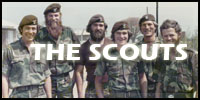History of the Selous Scouts
Text from "Service Before Self: The history, badges and insignia of the security forces of the Rhodesias and Nyasaland 1890-1980" by Mark P. Radford.
The history of the regiment can be traced back to a feasibility exercise carried out by the Police and Army between the 24th October and the 4th November 1966. This joint exercise was designed to investigate the possibility of forming a unit of men who would pose as the enemy (so called pseudo operators) and infiltrate the terrorists network within tribal areas. This exercise was the brainchild of B.S.A.P. Senior Assistant Commissioner Oppenheim and when concluded was judged to be a success. Despite this, the concept of a unit of pseudo operators was not adopted and the idea lay dormant for another six years.
On the 26th January 1973, a Special Branch Superintendent, Tommy Peterson, was given permission to establish a pseudo team which would incorporate former terrorists who had been "turned". The idea of using these captured turned terrorists as the core of a pseudo team was developed and refined over the next few months and the team was soon deployed operationally. During this period two C.Sqn.S.A.S. Sergeants, Alan (Stretch) Franklin and Andre Rabie had also been forming their own Army backed pseudo teams at the Army Tracking Wing at Kariba but had met with limited success. It was therefore decided that the Police would assist the Army effort and the professional input from these attached Special Branch officers enabled the pseudo teams to operate with constantly updated intelligence.
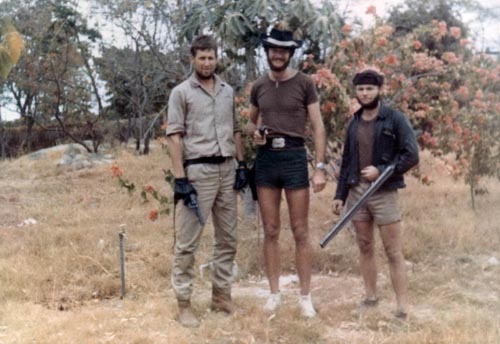
Andre Rabie, Stretch Franklin and Pete Clemence
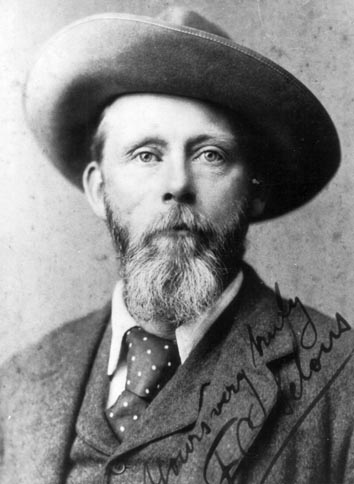 The progress of these experimental teams was closely monitored and by November 1973 it had been decided to form a regiment of pseudo operator groups who would be deployed clandestinely on both internal and external operations. The regiment was to utilise manpower from all branches of the Security Forces and from the ranks of captured turned terrorists and was to receive its orders from a co-ordinating committee made up from all the service and intelligence agencies. Captain R.F. (Ron) Reid-Daly, DMM, MBE (then O.C. Support Commando R.L.I.) was appointed Commanding Officer of the new regiment which was named the "Selous Scouts" after the famous African hunter Frederick Courtney Selous. The progress of these experimental teams was closely monitored and by November 1973 it had been decided to form a regiment of pseudo operator groups who would be deployed clandestinely on both internal and external operations. The regiment was to utilise manpower from all branches of the Security Forces and from the ranks of captured turned terrorists and was to receive its orders from a co-ordinating committee made up from all the service and intelligence agencies. Captain R.F. (Ron) Reid-Daly, DMM, MBE (then O.C. Support Commando R.L.I.) was appointed Commanding Officer of the new regiment which was named the "Selous Scouts" after the famous African hunter Frederick Courtney Selous.
Inkomo near Darwendale was selected as the Selous Scouts new barracks and the Army Tracking Wing at Kariba was absorbed by the new regiment altogether with all its personnel. In addition, a Territorial Army unit "The Tracker Combat Unit" was incorporated into the Scouts which boosted the strength of the regiment by a further ninety men. A temporary training camp was established at Bindura and by January 1974 2-Troop Selous Scouts were ready for operation deployment in the local Tribal Trust Land. Although placed in a fairly quiet area the Troop nevertheless achieved its mission and heartened by this Major Reid-Daly prepared 3-Troop Selous Scouts for initial deployment into the Chimanda Tribal Trust Land. At the successful conclusion of the operation 3-Troop was tasked to Chiweshe Tribal Trust Land on the 4th March 1974 and elements of 1-Troop Selous Scouts were similarly deployed at the end of the month. By the end of the year the Selous Scouts had chalked up two hundred and twenty one terrorists killed or captured, a significant achievement for such a young unit.
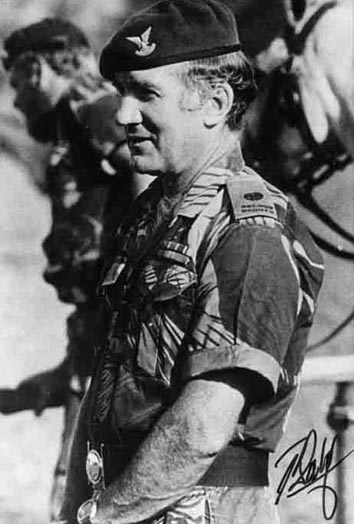 With its raison d'entre firmly established and its success proven the Selous Scouts became more involved in cross border operations during 1975-76 and these deployments became a predominant feature of Selous Scouts activities over the next five years. By the middle of 1975 the Scouts had expanded to six full troops each troop containing three sections of nine to twelve men a piece. Parachute training commenced on the 11 August with the first fourteen Scouts completing the course by 29th August. On the 17 January 1976 elements of the Scouts launched an attack on a Z.A.N.L.A. transit camp at Chicombidzi inside Mozambique, the first of many such operations. The Scouts' technique of using fast vehicle coluns against cross border targets was pioneered in an attack on Chigamane in the Gaza Province of Mozambique on the 13 May and its success led to the spectacular attack on 9th August against the Z.A.N.L.A. base at Nyadzonya/Pungwe. This operation, carried out by 84 officers and men, distributed between 14 vehicles, killed one thousand and twenty eight terrorists and wounded three hundred and nine, and was a devastating blow against Z.A.N.L.A. forces. Following this attack a Selous Scouts reconnaissance troop was formed and this troop, commanded by Captain Chris (Schulie) Schulenberg, carried out specialised reconnaissance work which directed the security forces to some of its most fruitful targets. With its raison d'entre firmly established and its success proven the Selous Scouts became more involved in cross border operations during 1975-76 and these deployments became a predominant feature of Selous Scouts activities over the next five years. By the middle of 1975 the Scouts had expanded to six full troops each troop containing three sections of nine to twelve men a piece. Parachute training commenced on the 11 August with the first fourteen Scouts completing the course by 29th August. On the 17 January 1976 elements of the Scouts launched an attack on a Z.A.N.L.A. transit camp at Chicombidzi inside Mozambique, the first of many such operations. The Scouts' technique of using fast vehicle coluns against cross border targets was pioneered in an attack on Chigamane in the Gaza Province of Mozambique on the 13 May and its success led to the spectacular attack on 9th August against the Z.A.N.L.A. base at Nyadzonya/Pungwe. This operation, carried out by 84 officers and men, distributed between 14 vehicles, killed one thousand and twenty eight terrorists and wounded three hundred and nine, and was a devastating blow against Z.A.N.L.A. forces. Following this attack a Selous Scouts reconnaissance troop was formed and this troop, commanded by Captain Chris (Schulie) Schulenberg, carried out specialised reconnaissance work which directed the security forces to some of its most fruitful targets.
During 1977 the Selous Scouts expanded their operations carrying out four major strikes against terrorist targets inside Mozambique as well as intensifying their efforts on internal operations in the Eastern districts of Rhodesia. The following year the Scouts were tasked to train the Security Force Auxiliaries of the interim transitional government, the so called Pfumo re Vahnu (Spear of the People) although this unpopular assignment was later handed over to other regular forces when it became apparent the Scouts were wasted in this role. At years end an operation was launched into Zambia to free Rhodesian security force members and Z.I.P.R.A. dissidents who had been captured and interned at a Z.I.P.R.A. camp at Mboroma. Operation Vodka, as the raid was named, was a success and 32 prisoners were released by the Scouts and safely conveyed back to Rhodesia.
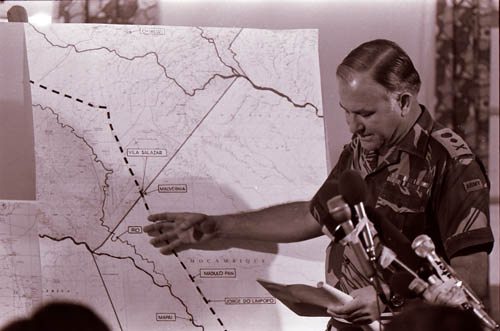
Press Conference by General Walls after attack on Mapai in Mozambique by the Selous Scouts
In 1979, their last full year of operations, the Scouts broadened their attacks still further and mounted a covert operation inside Zambia in a bid to kill Joshua Nkomo. The operation failed when one of the Selous Scouts operators within Zambia was captured by the intelligence gathered greatly assisted the Rhodesian S.A.S. when they tried to kill Nkomo at his Lusaka home in April. During the remainder of 1979 the Selous Scouts were occupied with targets in Mozambique, Zambia and Botswana but the writing was clearly on the wall for both the Selous Scouts and Rhodesia.
With the triumph of Mugaba and Z.A.N.U. at the election of a new Government of Zimbabwe it became abundantly clear that the controversial Selous Scouts had no place in the new order. Therefore, the regiment was quietly disbanded by the simple expedient of rebadging all members of the Scouts with the badges of their former units. And so by this rather shabby act of ingratitude the Selous Scouts were, without any decent ceremony, dismantled completely by Army Headquarters, the very body that had previously credited the Scouts with involvement in 68% of terrorist deaths within Rhodesia.
|

